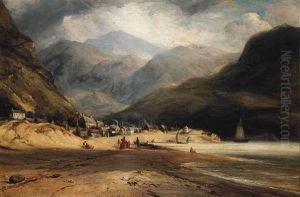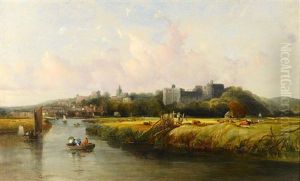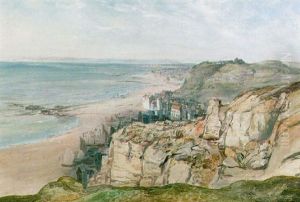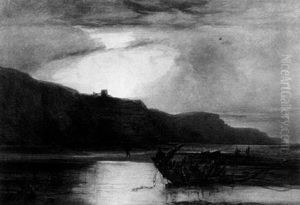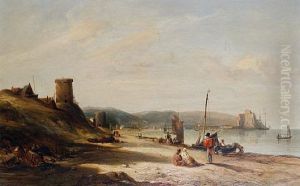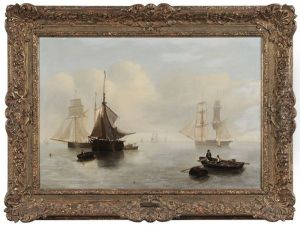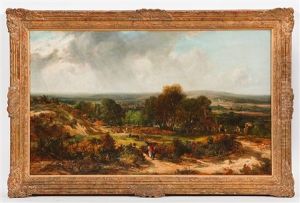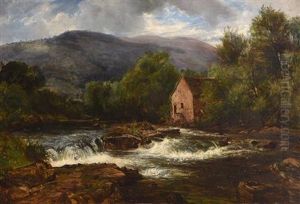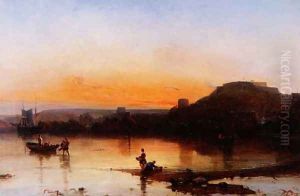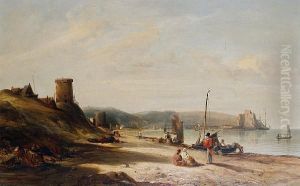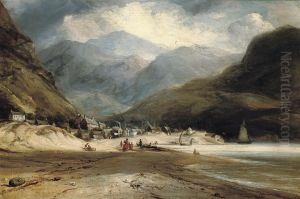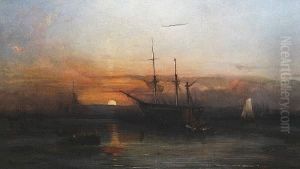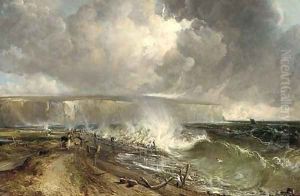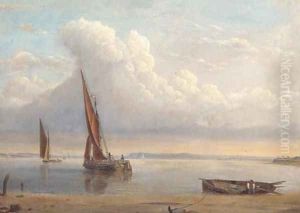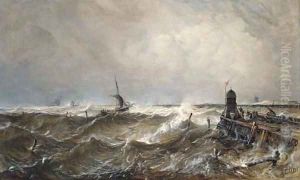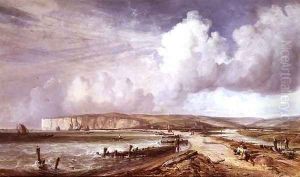Alfred Clint Paintings
Alfred Clint was a British marine painter born into an artistic family in 1807 in London, England. His father, George Clint, was a respected engraver and painter, which provided Alfred with an early exposure to the arts. Despite this artistic environment, there is little record of Alfred's formal training; however, it is believed that he learned much of his craft from his father and through self-directed study.
Throughout his career, Alfred Clint specialized in marine scenes, capturing the dynamic and often tumultuous relationship between sea and sky. His works are characterized by meticulous attention to detail, a keen observation of atmospheric effects, and a profound understanding of the sea's myriad moods. Clint's paintings often depicted ships in distress, naval battles, and serene harbor scenes, reflecting both the peril and beauty of maritime life.
Clint exhibited his works extensively during his lifetime. He was an active member of the Royal Academy, where he exhibited from 1828 to 1877. His contributions to the art world were not limited to exhibitions; Clint also engaged in the artistic community of his time, interacting with contemporaries and participating in the vibrant cultural life of 19th-century London.
Despite his contributions to British marine painting, Alfred Clint did not achieve the same level of fame as some of his contemporaries. However, his work has been appreciated by art historians and collectors alike for its technical skill and emotional depth. Today, Clint's paintings can be found in various public and private collections, serving as a testament to his passion for the sea and his skill as a painter.
Alfred Clint passed away in 1883, leaving behind a legacy of marine art that continues to captivate and inspire. His life's work stands as a significant contribution to the British art scene of the 19th century, reflecting both the era's fascination with the natural world and the enduring allure of the sea.
